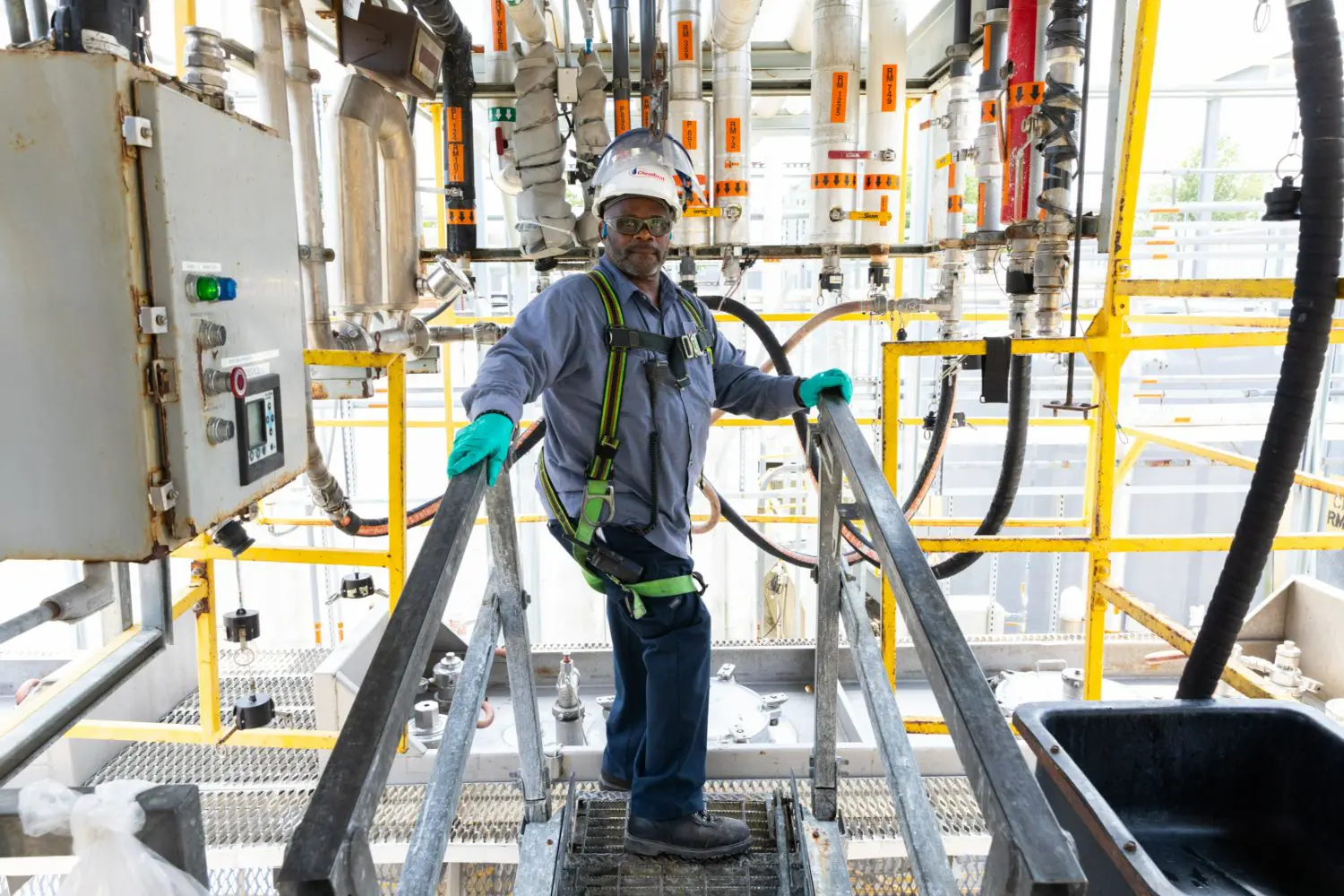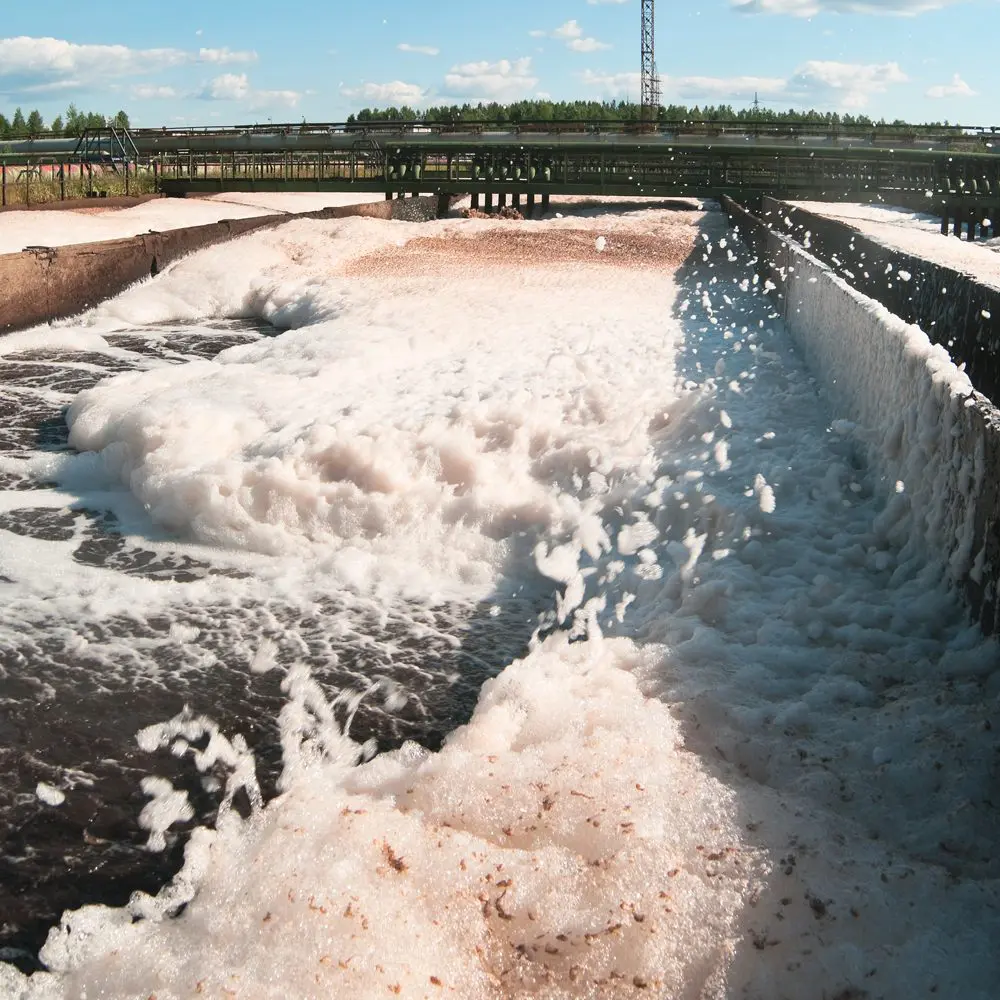-
USA - English
- Locations
- SDS Access
- CTVista®+ Login

At ChemTreat, we are experts in industrial wastewater treatment. We offer industrial water treatment programs and services for facilities looking to increase efficiency and decrease operational costs. We will help you select, apply, and monitor your chemical program to maximize equipment performance.
Industrial wastewater treatment requires appropriate technologies as well as proper application. After performing a full system audit and all requisite testing, ChemTreat can customize a wastewater treatment process that optimizes chemical usage, effluent flow rates, and off-site treatment costs. We provide environmentally-efficient and sustainable treatment methods for effluent systems. We also have expertise in water reuse systems and zero-liquid discharge. ChemTreat will select the optimal organic and inorganic chemicals to reduce your discharge costs and optimize your effluent system.
Our wastewater specialists have experience with unique wastewater treatment processes for industries such as metals, oil and gas, automotive, food and beverage, mining, steel manufacturing, and pulp and paper processing. ChemTreat is committed to helping facilities integrate industrial wastewater treatment programs.

ChemTreat has a full product line for foam reduction and elimination in industrial water systems, and can provide a defoaming agent best-suited to optimize your system.
We provide defoamer technologies to eliminate foam in boilers, cooling towers, and effluent systems, and ensure smooth operating conditions. The most common of these defoaming agents are surface tension reduction and bubble-wall destabilization products. Defoamer products consist of silicone, oil-based, ester-based, water-based, and polymeric constituents.
Our industrial wastewater treatment programs offer a complete portfolio of surfactants, coagulants, and emulsion flocculants typically used in oil removal applications.
ChemTreat’s chemical treatment programs offer a complete portfolio of emulsion flocculants, which are suspensions of minute beads of high-molecular-weight polymer in water, emulsified in an oil carrier. The minute beads are approximately 1 micron in diameter and contain concentrated polymer dissolved in water. These concentrated polymer beads, or “hydrogels,” are dispersed in a carrier fluid of high-flashpoint mineral oil by means of a dispersing surfactant that keeps the hydrogels from coalescing into larger droplets. Because the hydrogels are of greater density than the carrier oil, they are prone to settle over time, resulting in concentrated polymer solids on the bottom of the container with a layer of oil on the top. This separation can develop faster if the droplets are large, so keeping the droplets small and well-dispersed is important in maintaining the product stability.
Emulsion flocculants are typically copolymers of acrylamide, a nonionic building block, and a charge-bearing monomer. In the case of anionic flocculants, the anionic charge is produced by co-polymerizing acrylic acid with the acrylamide monomer. The ratio of acrylic acid to acrylamide determines the degree of charge on the molecule.
In the case of cationic flocculants, the cationic charge is provided by co-polymerizing AETAC, a methyl acrylate-derived cationic monomer with the acrylamide monomer. The ratio of AETAC to acrylamide determines the degree of charge on the molecule.
Because the hydrogels are made up of tightly-coiled polymer chains, mixing energy and time are required to ensure full contact of the hydrogels with the water to enable the polymer chains to uncoil fully. The polymer chains may be cationic, anionic, or nonionic with varying charge weights. The charge on the chain helps uncoil the chain, so a higher-charged polymer will open faster than a low-charged or uncharged polymer.
PUREFloc coagulants are naturally occurring polymers that function similarly to synthetic organic coagulants such as polyDADMACs and polyamines. However, they are much more effective for oil removal from water or wastewater. They can also be used to replace or reduce the use of inorganic metal salts such as polyaluminum chloride (PAC), aluminum chlorohydrate (ACH) and aluminum sulfate (Alum).
PUREFloc products can be utilized alone or in conjunction with traditional inorganic metal salts in industrial wastewater treatment programs.
These coagulants have been successfully applied in water clarification for the Food & Beverage, Primary Metals, Automotive, Mining, and Oil & Gas industries.
Benefits over synthetic coagulants and inorganic salts typically include:


We offer a full range of products for wastewater heavy metals removal. Our industrial wastewater treatment programs can be effective in all discharge pH ranges and result in treatment time and chemical usage savings.
A heavy metals removal program is necessary to ensure proper adherence to site discharge requirements for constituents such as iron, lead, copper, chromium, nickel, and manganese. These contaminants can enter wastewater streams from a variety of industrial processes, and if untreated, are toxic to the environment and living ecosystems. In recent years, many regulatory agencies have tightened discharge requirements for customer sites, and continue to monitor discharges to POTWs and the environment.
ChemTreat is a trusted industrial water treatment company with over 50 years of service and expertise. Our advanced laboratory services and experienced field engineers allow us to provide customized industrial water treatment programs and services across a range of industries. Our team can help you improve the efficiency of your facility and decrease operational costs. Contact us online to get in touch with our experts and schedule a consultation for custom industrial wastewater treatment solutions.
